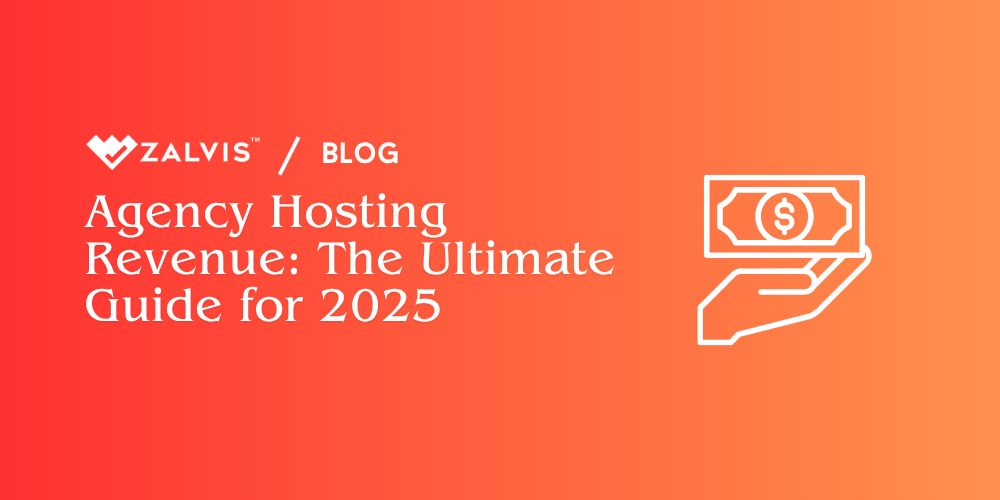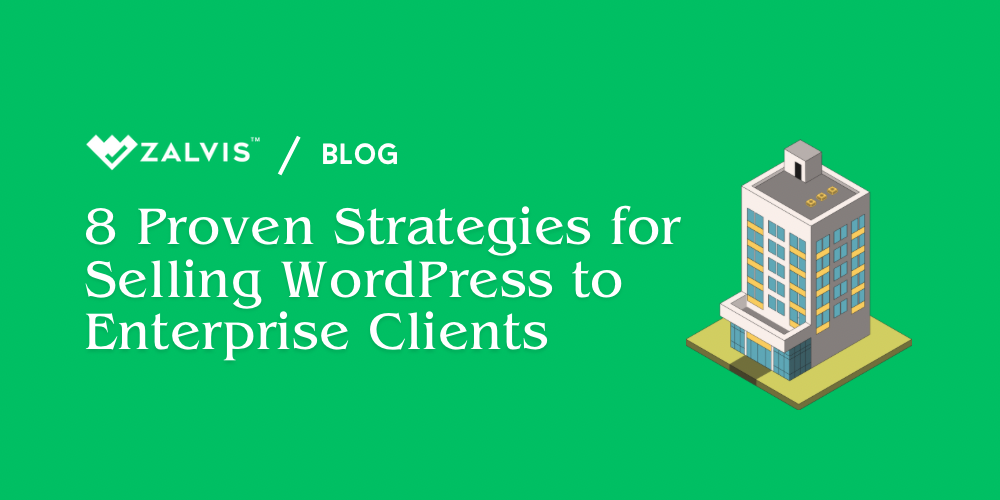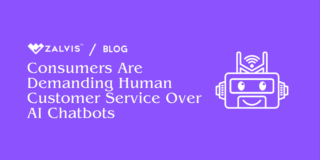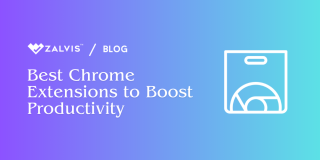For most digital agencies, the idea of generating significant agency hosting revenue seems distant. Instead, client hosting is treated like a hot potato—a necessary, but messy and unprofitable part of the job. You juggle dozens of logins for substandard accounts, spend non-billable hours on troubleshooting performance issues on servers you don’t control, and absorb the hidden costs of a fragmented workflow. This isn’t just inefficient; it’s a strategic blunder that costs your agency money, time, and control every single day.

But what if you could transform this biggest headache into your greatest asset?
Imagine a world where hosting isn’t a cost center, but a robust source of monthly recurring revenue (MRR). Where every site you launch is guaranteed to be fast, secure, and stable because you control the environment. Where you deepen client relationships and increase their lifetime value, all while simplifying your own operations.
This isn’t a fantasy. It’s a strategic pivot that top agencies are making, and it’s more accessible than ever. Drawing inspiration from industry best practices, this comprehensive guide will provide you with the definitive playbook for turning your agency’s hosting costs into a thriving, predictable revenue stream.
What You’ll Learn:
- The Strategic Imperative: Why offering hosting is no longer optional for serious agencies.
- The Three Hosting Models: A breakdown of the different ways to structure your service, from simple reselling to powerful cloud platforms.
- Choosing a Partner: The critical criteria for selecting a hosting platform that sets your agency up for success, including powerful options like Zalvis.com.
- Pricing & Packaging: How to architect irresistible offers that are both valuable to clients and highly profitable for you.
- The Sales Process: Practical scripts and strategies for selling hosting to new and existing clients.
- Operations & Legal: How to streamline onboarding and protect your agency with the right agreements.
Part 1: The Strategic Imperative: Why Your Agency Must Offer Hosting
Before diving into the “how,” it’s crucial to understand the fundamental “why.” Offering hosting as a service is not just about marking up a server; it’s about building a better, more resilient agency.
1. Build Predictable Agency Hosting Revenue (MRR)
The typical agency revenue cycle is a rollercoaster of project-based income. MRR is the antidote. A steady stream of hosting and care plan payments smooths out cash flow, making it easier to forecast budgets, invest in team growth, and reduce the stress of the feast-or-famine cycle. A client who pays you once is a transaction; a client who pays you every month is a long-term asset.
2. Take Absolute Control of Quality and Performance
You can build the most beautifully optimized WordPress site in the world, but if it’s deployed on a cheap, overloaded shared server, it will be slow and unreliable. This reflects poorly on your work. When you manage the hosting, you guarantee:
- Speed: You can use a modern, high-performance stack (NGINX, latest PHP versions, server-side caching) to ensure lightning-fast load times—a key factor for SEO, user experience, and conversions.
- Security: You can implement a robust, server-level security posture, protecting all of your clients from a single, controlled environment. This prevents the frantic, unpaid work of cleaning up a hacked site on a third-party host.
3. Strengthen Client Relationships and Increase Lifetime Value (LTV)
By managing a client’s hosting, you shift from being a one-off project provider to their indispensable technical partner. You are their first call for any website-related issue, which builds immense trust and “stickiness.” This makes them far less likely to shop around for a new agency for their next project and dramatically increases their LTV.
4. Streamline Agency Workflows for Massive Time Savings
Picture this: a single, elegant dashboard to manage every client site. No more spreadsheets of passwords. No more fumbling through ten different clunky cPanel interfaces. Centralizing your sites on one platform allows for one-click access, staging environments, and streamlined updates, saving your team countless hours of administrative work that can be reinvested into billable tasks.
5. Create a Gateway to High-Margin Care Plans
Hosting is the perfect foundation for a much more lucrative offer: the Website Care Plan. It’s a natural and easy upsell to bundle hosting with proactive maintenance services like software updates, security scanning, performance monitoring, and detailed monthly reports. This is where agencies unlock the highest profit margins.
Part 2: The Three Models of Agency Hosting
When deciding to offer hosting, you have three primary paths you can take. Your choice will depend on your technical comfort level, business goals, and the number of clients you serve.
Model 1: Traditional Reseller Hosting (The Low-Risk Start)
This is the classic entry point. You purchase a bulk hosting package from a large provider (like HostGator or SiteGround) and use their tools (usually WHM/cPanel) to create and manage smaller, individual accounts for your clients.
- Pros: Very low technical barrier to entry, simple to manage, and the parent company handles all the core server maintenance.
- Cons: You have limited control over the server environment, performance can be inconsistent due to “noisy neighbors,” and profit margins are the lowest of the three models.
- Best for: Agencies just starting out or those wanting to test the hosting waters with minimal risk and technical investment.
Model 2: The DIY Cloud Server (Maximum Control & Margin)
In this model, you lease a raw Virtual Private Server (VPS) from a cloud infrastructure provider like DigitalOcean, Vultr, or Linode. You then use a modern server control panel (a SaaS tool like SpinupWP, RunCloud, or Ploi) to easily configure, secure, and manage WordPress sites on it.
- Pros: Incredible performance-to-price ratio, full control over the software stack, and exceptionally high-profit margins since the raw server costs are very low.
- Cons: You hold more responsibility. While the control panel automates 99% of the sysadmin work, you are ultimately in charge of making sure backups are configured correctly and responding if the server has issues.
- Best for: Technically confident agencies that want the highest possible profit margins and complete control over their hosting environment.
Model 3: The Managed Cloud Platform (The Performance & Peace of Mind Sweet Spot)
This model offers the best of all worlds for the majority of agencies. You partner with a premium managed hosting provider that is built on top of high-performance cloud infrastructure (like Google Cloud Platform or AWS) but handles all of the complex server management for you.
This isn’t just reselling; it’s partnering with a specialist. These platforms are purpose-built for speed, security, and—most importantly—agency workflows.
A prime example of this model is Zalvis.com. They provide the raw power and scalability of a cloud server but wrap it in an easy-to-use dashboard with expert, 24/7 support. You get the performance benefits of the DIY model without the responsibility and management overhead.
- Pros: Blazing-fast performance out of the box, bulletproof security managed by experts, and phenomenal support. Features are often designed specifically for agencies (like staging sites, collaboration tools, and easy billing transfer). You get peace of mind.
- Cons: Higher per-site cost than the DIY model, which means slightly lower (but still very healthy) profit margins.
- Best for: Any agency that values its time and wants to deliver top-tier performance and security to clients without becoming a part-time system administrator. It’s the ultimate “focus on your business, not your servers” solution.
Part 3: How to Choose Your Hosting Partner or Platform
Whether you choose the DIY or Managed Platform model, the partner you select is critical. Don’t just look at price. Use this checklist to evaluate your options.
- Performance & Stack: Does the platform use a modern, high-performance stack? Look for NGINX, the latest stable PHP versions, server-level caching (not just plugin caching), and an integrated Content Delivery Network (CDN).
- Agency-Centric Features: Is the platform built for you? A great agency host should offer:
- A single dashboard to manage all client sites.
- One-click staging environments for safe testing.
- Easy collaboration tools to add team members or contractors.
- Simple billing transfer to hand off payment to the client when ready.
- Expert Support: This is non-negotiable. Is support available 24/7 via live chat? Are the support engineers actual WordPress experts who can help with more than just server issues? Test their support before you commit.
- Robust Security: A good partner is proactive, not reactive. They should provide a Web Application Firewall (WAF), free and automatically renewing SSL certificates, malware scanning, and automatic patching for server-level vulnerabilities.
- Scalability and Transparency: How easy is it to scale a site’s resources as it grows? Are the plans and pricing clear, or are there hidden fees and aggressive upsells? Look for a partner with transparent, resource-based pricing.
Platforms like Zalvis.com are engineered to excel in these areas, specifically targeting the needs of agencies who refuse to compromise on speed and support. When you’re selling a premium service, you need a premium foundation to build upon.
Part 4: Architecting Your Offers: Pricing and Packaging
This is where your business strategy comes to life. Your goal is not just to cover costs but to build a truly profitable agency hosting revenue model based on immense value. Pricing is both an art and a science. The most important rule is to price based on value, not on your cost.You are not selling a few gigabytes of space; you are selling speed, security, peace of mind, and expert support.
Step 1: Understand Your Costs
Calculate your Cost of Goods Sold (COGS).
- DIY Model Example: A $24/mo DigitalOcean VPS + $15/mo RunCloud plan = $39/mo. This can host dozens of sites, so the per-site cost is incredibly low.
- Managed Platform Model Example: A platform like Zalvis.com might cost $25/mo for 5 websites. This is your COGS for five websites.
Step 2: Create Tiered Hosting Plans
Offer 2-3 simple tiers that are easy for clients to understand. Differentiate them by tangible resources and use cases.
Example Hosting Tiers:
- Starter Plan:
$40/month- Ideal for brochure sites, portfolios, low-traffic blogs.
- Includes: Managed Hosting, Global CDN, Daily Backups, SSL & Security.
- Capacity: Up to 25,000 visits/month.
- Business Plan:
$75/month- Perfect for growing businesses, lead-gen sites, and light e-commerce.
- Includes: Everything in Starter + higher performance, priority support.
- Capacity: Up to 100,000 visits/month.
- Pro Plan:
$150+/month- For established e-commerce, membership sites, and high-traffic applications.
- Includes: Everything in Business + highest performance tier, advanced caching.
- Capacity: Up to 400,000 visits/month.
Step 3: Bundle Hosting with High-Margin Care Plans
This is where you unlock true profitability. A care plan is a proactive maintenance subscription.
Example Care Plan Tiers:
- Essential Care:
$120/month- Includes the Starter Hosting Plan ($40 value).
- Weekly WordPress, plugin, and theme updates.
- 24/7 uptime monitoring.
- Monthly health and security report.
- Growth Care:
$250/month- Includes the Business Hosting Plan ($75 value).
- Everything in Essential Care.
- Visual regression testing on updates.
- Monthly performance optimization scan.
- 1 hour of developer time for minor edits.
By bundling, the hosting becomes a feature of a more comprehensive, high-value service.
Part 5: The Sales Process: How to Sell Hosting to Clients
You have a great service; now you need to sell it. Effectively communicating its value is critical to securing your new agency hosting revenue.
For New Clients: The “Non-Negotiable Quality” Approach
This is the easiest sale. You should build your hosting & care plan directly into every new website proposal. It is not an optional line item.
Frame it as a requirement for quality assurance.
- Script for your proposal: “To guarantee the performance, security, and stability of the website we build, our service includes one year of our Essential Care Plan. This ensures your site runs on our high-performance platform, is updated weekly, and is constantly monitored. We cannot provide a warranty for our work on inferior, third-party hosting environments.”
For Existing Clients: The “Free Migration & Performance Upgrade” Offer
Approach existing clients on other hosts with a value-packed, irresistible offer.
- Audit Their Site: Run their current site through Google PageSpeed Insights and GTmetrix. Save the poor scores.
- Craft the Offer: Send a proactive email.
- Email Script: “Hi [Client Name], As part of a complimentary review for our valued clients, we ran a performance and security audit on your website. We found that your current hosting is causing some significant slowdowns (see attached report), which can affect your SEO and user experience. To solve this, we’d like to offer you a free, white-glove migration to our new premium managed hosting platform. The result will be a dramatically faster and more secure website. Would you be open to a quick 15-minute chat about this next week?”
The offer of a free migration to get a better result is a powerful and highly effective sales tool.
Part 6: Streamlining Operations: Onboarding and Legalities
Once a client says yes, a smooth process is key to reinforcing their good decision.
The Client Onboarding Checklist
- Gather credentials for their old hosting and domain registrar.
- Perform a full backup of their current site.
- Set up the new site on your hosting platform’s staging environment.
- Migrate the files and database.
- Thoroughly test the staging site (links, forms, functionality).
- Schedule the go-live (usually a low-traffic time).
- Update DNS records to point the domain to the new server.
- Install and configure all your standard security, backup, and performance tools.
- Send a confirmation email to the client with their new details.
The Importance of a Service Level Agreement (SLA)
Protect your agency and manage client expectations with a clear contract. Your SLA should define:
- Scope of Service: What hosting and maintenance tasks are included.
- Support Boundaries: What is included vs. what is billable work (e.g., content changes, fixing things they broke).
- Payment Terms: What happens if a payment fails.
- Uptime Guarantee: Be realistic (99.9% is standard).
- Limitation of Liability: A clause that limits your financial liability.
The Golden Rule: Don’t Host Email
This is critical. Never host client email on your web server. Email deliverability is a highly specialized field, and mixing it with web hosting is a recipe for disaster (e.g., blacklisted IPs). Insist clients use a professional email provider.
- Recommend: Google Workspace, Microsoft 365 or ZOHO Emails.
- Explain: “We are specialists in high-performance web hosting. For something as mission-critical as email, we exclusively recommend using the global leaders, Google or Microsoft, to ensure maximum deliverability and security.”
Conclusion: Start Building Your Agency’s Financial Foundation Today
Shifting your perspective on hosting is more than a new revenue stream; it’s a fundamental improvement to your entire agency model. You move from being reactive to proactive, from being a vendor to a partner, and from having a cost center to owning a profit center.
You gain the control to deliver exceptional results, the workflow efficiencies to save countless hours, and the predictable MRR to build a more stable and scalable business. The technology and platforms available today, from DIY tools to fully managed solutions like Zalvis.com, have removed the barriers that once made this difficult.
The path is clear. Stop leaving money on the table. Start today by auditing your current process, choose the model that’s right for you, and take the first step toward building a stable and profitable source of agency hosting revenue.




